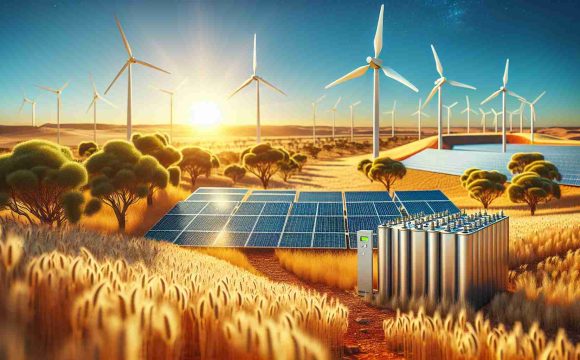China’s grand renewable energy plans face unsettling realities. The nation’s goal for a 1200 GW capacity has sparked both hopes and significant hurdles.
As the world’s largest investor in renewable energy, China ambitiously set this target during the UN Climate Ambition Summit in 2020 when its solar and wind power capacity was only 446 GW. While this proactive approach exemplifies a commitment to a greener future, it has inadvertently exposed weaknesses in the nation’s energy infrastructure. The energy grid struggles to cope with the unpredictable power generation stemming from such vast renewable sources, which complicates balancing supply and demand.
In perspective, 2020 was a turbulent year for the Chinese economy, impacted heavily by the COVID-19 pandemic. The discontinuation of the feed-in tariff program added further strain on renewable energy investments, leaving many businesses offloading assets and waiting on overdue subsidies, casting a shadow over renewables’ promising potential.
The crux of China’s energy dilemma lies in storage capabilities. Surplus energy generated, if not efficiently stored, is wasted. Although advancements in battery technologies have been made, the scale is still insufficient. To harness the opportunities presented by renewable sources effectively, global collaboration on innovative solutions—such as large-scale battery networks and hydrogen storage—becomes crucial.
As China grapples with transforming its ambitious energy milestones into sustainable success, the international community’s role in addressing these challenges is more vital than ever.
China’s Renewable Energy Revolution: Balancing Ambition with Reality
## Introduction
China is at the forefront of a global transition to renewable energy, yet the path to achieving its ambitious goal of 1200 GW capacity by 2030 is fraught with challenges. As the largest investor in renewable energy globally, China’s commitment, initiated during the UN Climate Ambition Summit in 2020, highlights its dedication to a sustainable future. However, the unexpected realities of this transition have raised concerns regarding the effectiveness of existing infrastructure and technology.
## Current Capacity and Future Ambitions
As of 2023, China’s renewable energy capacity has significantly increased from 446 GW in 2020. The integration of solar and wind power has rapidly grown, yet the infrastructure to manage this energy effectively remains a critical concern. Analysts project that by 2025, renewable energy capacity could surpass 1300 GW, but achieving operational stability and maximizing efficiency in energy distribution is essential.
## Key Challenges
1. Energy Grid Limitations
China’s energy grid currently struggles to manage the variability associated with renewable energy generation. With significant fluctuations in energy production due to weather conditions and other factors, maintaining a steady supply becomes difficult. Grid management technologies and protocols must evolve to synchronize supply with demand accurately.
2. Storage Solutions
The lack of robust energy storage technologies is one of the most pressing issues. While investments in innovative battery technologies are increasing, their deployment is lagging behind the growth of energy production. Currently, the available storage systems can only absorb a fraction of the surplus energy generated.
3. Regulatory and Economic Hurdles
The discontinuation of the feed-in tariff has led to uncertainty in renewable energy investments. Companies in the renewable sector face cash flow challenges and delayed subsidies, driving some businesses to divest from renewable projects. Recent policies aimed at stabilizing these investments and providing incentives are under discussion, but their implementation remains critical.
## Innovations on the Horizon
Renewable Energy Storage Technologies
Innovations in energy storage systems, such as large-scale lithium-ion batteries and emerging technologies like solid-state batteries, are pivotal to overcoming current limitations. Furthermore, hydrogen storage is gaining momentum as a promising solution to store excess renewable energy and facilitate its later use in various sectors, including transportation and heating.
Smart Grid Development
Implementing smart grid technologies could revolutionize China’s energy management. These systems use real-time data and analytics to balance energy supply and demand dynamically, optimizing the grid’s efficiency and reliability.
## Pros and Cons of China’s Renewable Energy Strategy
Pros:
– Environmental Impact: A significant reduction in greenhouse gas emissions.
– Economic Growth: Potential for job creation in the renewable energy sector.
– Energy Independence: Decreased reliance on fossil fuel imports.
Cons:
– Infrastructure Strain: Aging grid infrastructure may impede efficiency.
– Economic Risks: Potential instability in the renewable energy market due to regulatory changes.
– Technology Dependence: Reliance on foreign technology can pose risks amid trade tensions.
## Conclusion
China’s journey towards achieving its renewable energy goals requires not only technological innovation but also substantial international cooperation. By addressing the existing challenges through collaborative efforts—and harnessing advancements in storage and grid management—China can turn its ambitious targets into sustainable realities. The global community’s support will be essential as China pushes forward into this vital sector, shaping the future of energy worldwide.
For more insights on energy trends and developments, visit Energy.gov.







